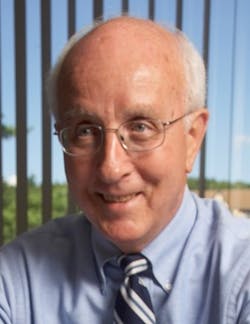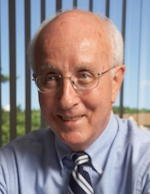In a long career in the field of industrial laser material processing technology, I’ve been exposed to a vast number of applications and I have the greatest admiration for those that come closest to a textbook description of the process—photon energy, converted to heat, causing a physical change in a material, with a minimum of residual heat effects. Not a classic definition, but the one I used in the countless courses I taught over the years.
In that category are certain laser welding, cutting, drilling, and surface treatment processes. Among the latter is dry laser peening—Tomokazu Sano describes work being done at Osaka University with femtosecond laser pulses producing an intense shock wave to plastically deform a material, resulting in a change in the base material hardness with minimal heat-affected and melted zones, achieved without a sacrificial overlay under atmospheric conditions (see article). Laser peening comes close to my classic definition of industrial laser material processing.
In layman’s terms, do what you want with minimal disruption rapidly, efficiently, and I may add cost-effectively, making it an industrial process.
Peter Jaeschke (Laser Zentrum Hannover) expands on this definition, showing those that offer high flexibility and the contactless, wear-free mechanism of the laser for the processing of complex components or temperature-sensitive materials, with locally limited energy input (see article). Examples are totally new opportunities in processing lightweight components used in the automotive industry. Defined combinations of wavelength, optical power, and the right beam shape can be used to enable material phase transitions, crystallization and annealing processes with coatings, and surfaces that provide unique performance and functionality.
Medical device manufacturers are increasingly evaluating and deploying pulsed UV fiber lasers for laser marking a broad range of polymers, and are also employing CW thulium-doped 2 µm fiber lasers for clear polymer/polymer joining and certain polymer-metal welding applications. Brian Baird (IPG Photonics) suggests that medical device manufacturers are keenly aware of laser marking and welding systems when considering adoption of next-generation laser processes in their manufacturing facilities (see article).
Dirk Hauschild (LIMO GmbH) shares with us his thoughts on how combinations of wavelength, optical power, and the right beam shape can be used across all industries to enable material phase transitions, crystallization and annealing processes with coatings, and surfaces that provide unique performance and functionality. He provides an overview of new mechanisms in laser materials processing that can open up a new dimension of materials processing for the current and coming challenges in science, industry, and everyday life (see article).
We are all excited by the prospect of the laser additive manufacturing of large structural components. For this to happen, appropriate processing systems are required. Peter Middleton (MechChem Africa) interviews Hardus Greyling (CSIR) and Marius Vermeulen (Aerosud Innovation and Training) about the Aeroswift project that involves the development of one of the largest laser-based powder-bed fusion additive manufacturing machines in the world, to be used for the manufacture of high-value aerospace and other components (see article).
These five outstanding industrial applications show the versatility of photonic energy.

